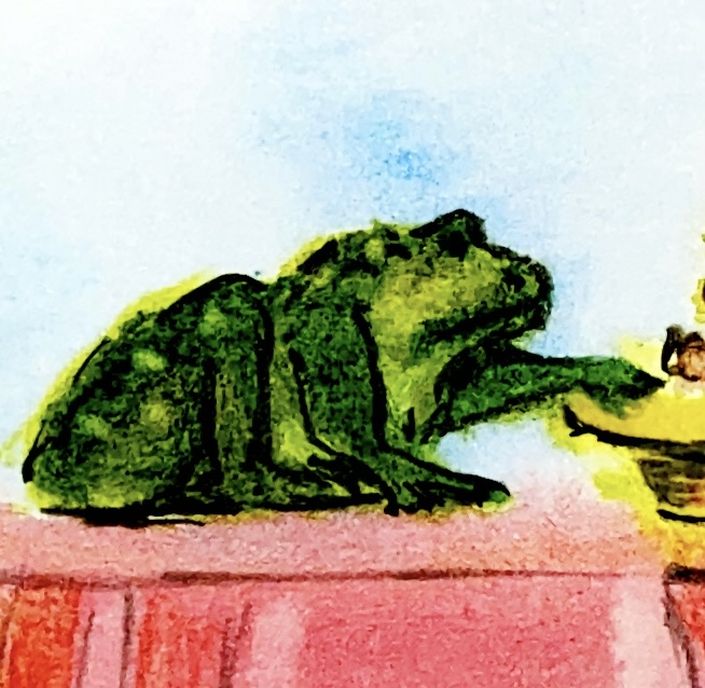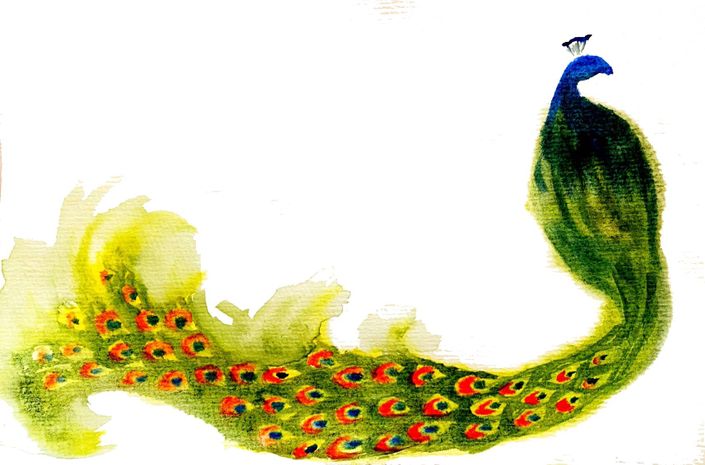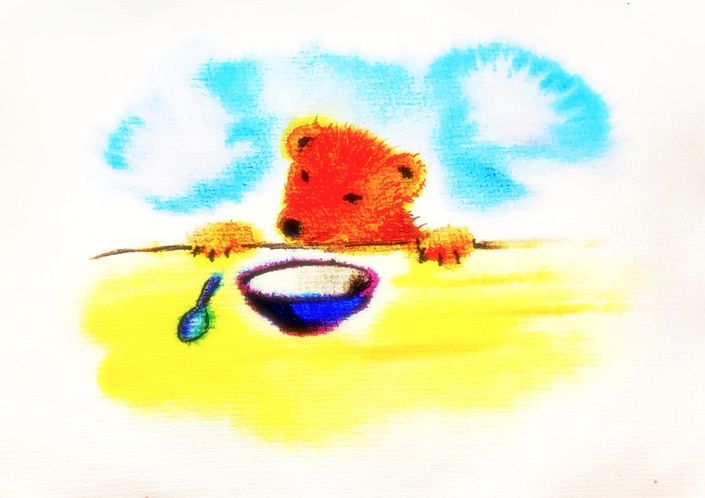What you will learn:
- How to use block crayons to create simple drawings from stories
- How to lead students through the drawing process
- How to derive a language arts lesson from a story imagination, particularly from the drawings
- How to "find" the consonants of the alphabet in these pictures that were created from the stories, thus providing an integrated and meaningful connection for the child to the abstract symbols
- How to use the whole words and initial sounds of those words to develop phonemic awareness and to strengthen sound-symbol connections
What you will receive:
- 36 Video Drawing Lessons--complete lessons for creating 36 beautiful drawings (from the 36 stories presented in 1st Grade Storytelling).
- 36 Video Language Arts Lessons--complete language arts lessons to pull 36 language arts lessons integrated with the 36 drawings
- Explanations for how to adjust these lessons to the abilities of the students
- A complete list of First Grade Language Arts Goals from Simply Waldorf
- A complete First Grade Year Block Rotation--this can be used as a guideline or simply as an example
- Additional resources, video and PDF articles, to deepen your understanding of the course and of Waldorf education
What you will need:
- Block crayons
- Colored Pencils
- Drawing paper
Who is this course for:
This course is for homeschool parent-educators as well as teachers in a more traditional setting--or anyone anywhere in between.

First Grade Language Arts & Drawing Course
In Waldorf Education, we strive to bring every lesson in a meaningful context. With language, this means that we can derive our language lessons out of stories and other imaginative sources that are already familiar to the child. From the images that have lived in the child's imagination, we draw artistic pictures and then find symbols from within those pictures. From the symbols, we find that the letters we use today have evolved. Of course, this is not meant to re-create the actual historical process for how the modern English alphabet evolved. Instead, the student experiences a process that is more immediately connected to the stories they heard and imagined. The result is that they feel more connected to these words and letters, when otherwise such symbology could feel random and abstract.
This course, of thirty-six total lessons, will present examples of how we create the pictures, words, and consonant letters from 21 different stories. The rest of the course brings in the practice of writing and reading--yes, in that order for some children. While it is completely possible to copy these lessons for your student(s), it is just as feasible to use these as examples that empower you to create your own lessons in the same ways. So you will have that option for yourself with every lesson. As you observe how much challenge your child needs, the creation of lessons that are more or less advanced may become something you choose to do.
Because the lesson-building process involves the creation of artwork, these video lessons will guide you through the process of creating the drawings. At the same time, this course is not meant to be an introductory art course. That being said, we are working with first-grade level drawings. So if you are new to visual artwork, this is a great course to help you gain confidence and skill. It is also important to remember that many students will surpass us anyway. When they are brought to artwork early in life, they have a much easier time later on developing to great heights. It is certainly important that we give them some foundational skills. However, the most important thing we can give the young student is the example of someone who is willing to strive and who does not engage in the detrimental self-critique. We give it our best efforts and move forward. We will definitely see things that we want to improve and we strive to do that in the future. We do not waste any time or energy degrading ourselves for some lack of perfection. When the teacher can embody this everyday--and sometimes it means we have to be able to laugh at ourselves in a healthy way--then we give the young student one of the most important gifts imaginable.
The story sources used in this course correspond to the stories presented in the First Grade Storytelling Course. This does not require that you take that course. If you do not, and if you are not familiar with the stories used, you may want to read the stories so that you can understand how the lesson is being derived from the story. Understanding how this works will help you feel more empowered to do the same thing on your own.
Course Curriculum
- How to Use These Video Lessons (7:16)
- What is a Course in Simply Waldorf? (3:44)
- Main Lesson and the Main Lesson Block (8:10)
- A First Grade Block Rotation
- Setting Up a Homeschool Classroom (19:56)
- 1st Grade Language Arts and Drawing - Introduction and Overview
- General Note: Waldorf First Grade Language Arts (11:08)
- First Grade Language Arts Goals
- Resources for Stories Used in this Course
- Language Arts Lesson 1: Frog Prince (23:02)
- Language Arts Lesson 2: Wolf and Seven Kids (21:24)
- Language Arts Lesson 3: The Twelve Brothers (16:38)
- Langauge Arts Lesson 4: Red Riding Hood (16:24)
- Language Arts Lesson 5: Language of Animals (16:07)
- Language Arts Lesson 6: Shoemaker and Elves (17:42)
- Language Arts Lesson 7: Queen Bee (11:42)
- Language Arts Lesson 8: Bremen Town Musicians (14:22)
- Language Arts Lesson 9: Hansel and Gretel (9:52)
- Language Arts Lesson 10: Lazy Jack (11:25)
- Language Arts Lesson 11: Salt and Bread (13:59)
- Language Arts Lesson 12: Old Woman Who Lost Her Dumpling (9:25)
- Language Arts Lesson 13: Bul-Bul Bird (9:23)
- Language Arts Lesson 14: Half Chick (12:07)
- Language Arts Lesson 15: Crab (11:38)
- Language Arts Lesson 16: Donkey Driver and Thief (11:41)
- Language Arts Lesson 17: Three Wishes (9:57)
- Language Arts Lesson 18: Anansi and the Hat-Shaking Dance (13:20)
- Language Arts Lesson 19: Goldilocks (13:45)
- Language Arts Lesson 20: Fire on the Mountain (12:21)
- Language Arts Lesson 21: Hunter and the Magic Flute (15:57)
- Language Arts Lesson 22: Stonecutter (18:38)
- Language Arts Lesson 23: Urashima (10:08)
- Language Arts Lesson 27: Lion Once Flew (19:41)
- Language Arts Lesson 25: Simple Wang (17:33)
- Language Arts Lesson 26: Clever Thief (18:20)
- Language Arts Lesson 28: Tiger's Whisker (20:04)
- Language Arts Lesson 24: Why Sun and Moon Live in Sky (10:32)
- Language Arts Lesson 29: Mr Lazy-bones (11:42)
- Language Arts Lesson 30: Tiger, Brahman, and Jackal (15:23)
- Language Arts Lesson 31: Monkey and Crocodile (15:46)
- Language Arts Lesson 32: Jack and Beanstalk (12:47)
Featured Courses
You also might be interested in our other First Grade Courses or consider our core course bundle which includes First Grade Stories, First Grade Math, First Grade Language Arts, and a bonus course, First Grade Math Tips and Tricks.
First Grade Core Bundle
Our bundle includes First Grade Stories, First Grade Language Arts, First Grade Math and a bonus course, First Grade Math Tips and Tricks.




